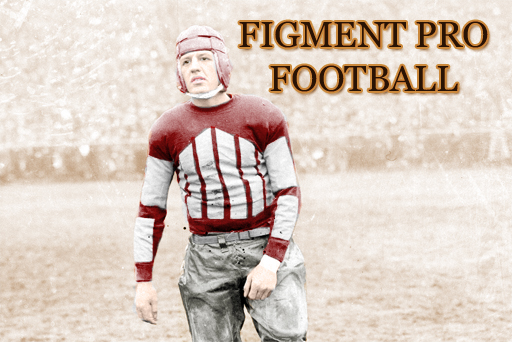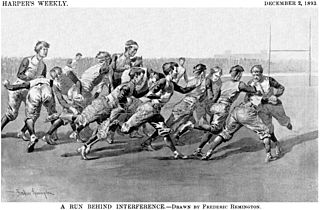The first season of what would eventually become a multi-billion dollar industry woven into the fabric of American consciousness didn't exactly explode into the culture of sport when the first game was played on a windy Saturday in Akron, Ohio.
The American Football Association featured 14 clubs in 1920. These clubs were of varying skill and talent and there were undoubtedly some clubs outside the AFA that were just as good, if not better, than some of those that were within it. Like the proto-baseball of the 19th century, a fan from today who time-traveled to the past would recognize the sport, but it was played in a largely run-based strategy that was focused primarily on field position with teams occasionally punting on early downs (including sometimes first down) to try to cobble an edge. The largely-Midwestern locations of the clubs was due to the Blue Laws that still held sway along most of the East Coast. With Saturdays belonging to the much more popular collegiate variety, the pro footballers toiled on Sundays - and that was illegal in large swathes of the large cities like New York, Boston and Philadelphia (although baseball was beginning to get exceptions to these rules).
There were clubs in some larger cities (Buffalo, Chicago, Cleveland, Milwaukee and Pittsburgh) but most were in slightly smaller cities: Akron, Columbus, Dayton, Fort Wayne, Gary, Rochester, Syracuse, Toledo and Youngstown rounded out the membership. Scheduling was left up to the clubs and therefore chaotic. Only games between members would count and the champion would be decided by league vote - there would be no playoffs. So the league ended up having some teams play as many as 8 or 9 league contests, while some played three, or four, and in two cases, teams played just one league contest.
Youngstown made it easy on most people by winning all seven of their games to be the consensus choice as league champs. Dayton posted a 6-2-0 mark with Akron (5-3-1), Buffalo (5-1-0) and Chicago (4-2-2) also considered strong clubs. Pittsburgh, featuring the league's most famous player in John Oxendine, went 4-3-1 with Oxendine's participation sporadic and of uneven quality. His fame had landed him the role of league president as well as being the coach and part-owner of his team. Nevertheless he would abandon both posts after the 1920 campaign though he would continue to play pro football for several more seasons.
Like other professional sports, the rise of the professional flavor of American football emerged from the popularity the amateur version of the game (college football in this case) and the formation of "athletic clubs" which fueled betting, which in turn fueled the importance of winning and losing, and that in turn fueled a desire to find the best practitioners of the sport. And in true American fashion those practitioners (aka players), as the possessors of a commodity that was in demand, would naturally seek compensation for that commodity. So professional football, like baseball and hockey before it, and basketball afterwards, was born from the simple and common desire to make some money.
Without getting bogged down in the myriad names, athletic clubs and associations and various teams that dotted the "professional" football landscape in the 19th century, a brief synopsis of the serpentine manner in which an organized (key term, there) professional league was founded.
In the late 19th century college football became popular - not as popular as baseball, mind you, but particularly in the East and Midwest, college football had a devoted, and growing following in the 1880s and '90s. Somewhat interestingly, the first openly professional league was formed by, of all people, two baseball clubs. At the height of the "baseball war" of 1890-91, the clubs in Philadelphia: the Keystones of the Century League and the Sailors of the Border Association, had a strong rivalry for the hearts & minds of Philadelphia fans. So when it was discovered that Keystones owner Jefferson Edgerton was going to field a professional football club, it was only natural that Sailors owner Victory Crary would try to one-up Edgerton with a club of his own. The personal enmity of Edgerton & Crary made this story a colorful one that we do not have the time to explore in full here. However, at this time, a vibrant semi-professional scene could be found in western Pennsylvania and Ohio - this was the epicenter of the pro game (such as it was) at the time. Crary, in his typical fashion, was determined to put one over on Edgerton and got together with a club owner in Allegany (now part of the city of Pittsburgh) and another in Youngstown, and created a short-lived "league" composed of three clubs (Crary's club naturally used the Sailors moniker). The "Border Football Association" lasted one season (which consisted of just four games) and lost money but it did earn the nod as the first professional football circuit.

